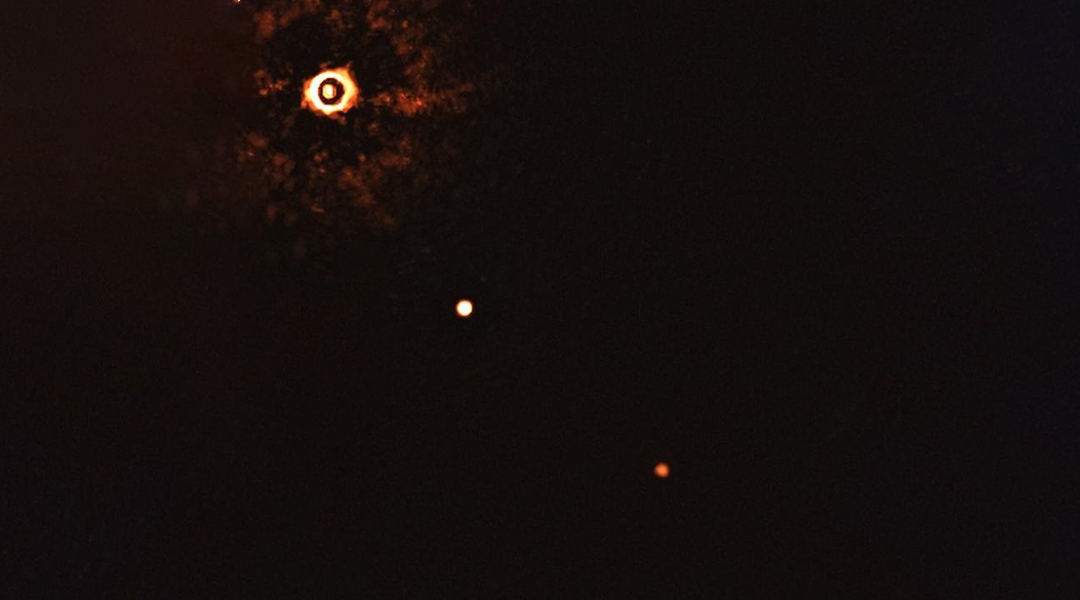Image credit: ESO/Bohn et al.
In an exciting new development, the European Southern Observatory (ESO) has release images of a young, Sun-like star accompanied by two giant planets. These are some of the first direct images taken of a system with multiple planets — only two such systems have been directly observed to date, both around stars markedly different from our Sun — and could be instrumental in understanding how our own solar system formed and evolved.
“This discovery is a snapshot of an environment that is very similar to our solar system, but at a much earlier stage of its evolution,” says Alexander Bohn, a Ph.D. student at Leiden University in the Netherlands, who led the study published in Astrophysical Journal Letters.
The images are of a system known as TYC 8998-760-1, located 300 light-years away from Earth. The system’s two gas giants orbit their sun at distances greater than those that our own giants, Jupiter and Saturn, orbit our own Sun, and were found to be quite heavy, with the inner planet having 14 times Jupiter’s mass.
“Even though astronomers have indirectly detected thousands of planets in our galaxy, only a tiny fraction of these exoplanets have been directly imaged,” says co-author Matthew Kenworthy, associate professor at Leiden University, adding that “direct observations are important in the search for environments that can support life.”
These images were captured during the team’s search for young giant planets orbiting stars similar to our Sun. Bohn described the star found in TYC 8998-760-1 as a “very young version of our own Sun” at just 17 million years old.
In the image, the two planets are two bright points of light located distantly from their parent star, which is located in the upper left of the frame. The astronomers were able to image the planets using a high performance instrument called SPHERE. This device uses a coronagraph, which is an attachment that is designed to block out the direct light from a star so that nearby objects can be resolved. An interesting way to look at it is as an artificial solar eclipse, which allows us to look into space byond the sun’s glare. Additionally, the team was able to identify the two bright points in their image as planets by taking different images at different times to distinguish them from background stars.
“While older planets, such as those in our Solar System, are too cool to be found with this technique, young planets are hotter, and so glow brighter in infrared light,” said the team in a statement. “By taking several images over the past year, as well as using older data going back to 2017, [we] have confirmed that the two planets are part of the star’s system.”
Future observations will involve ESO’s Extremely Large Telescope (ELT), which will help the team study the system further to determine whether the planets formed in their current location or migrated there. Bohn also adds, “The possibility that future instruments, such as those available on the ELT, will be able to detect even lower-mass planets around this star marks an important milestone in understanding multi-planet systems, with potential implications for the history of our own Solar System.”
Quotes adapted from original press release provided by ESO

















